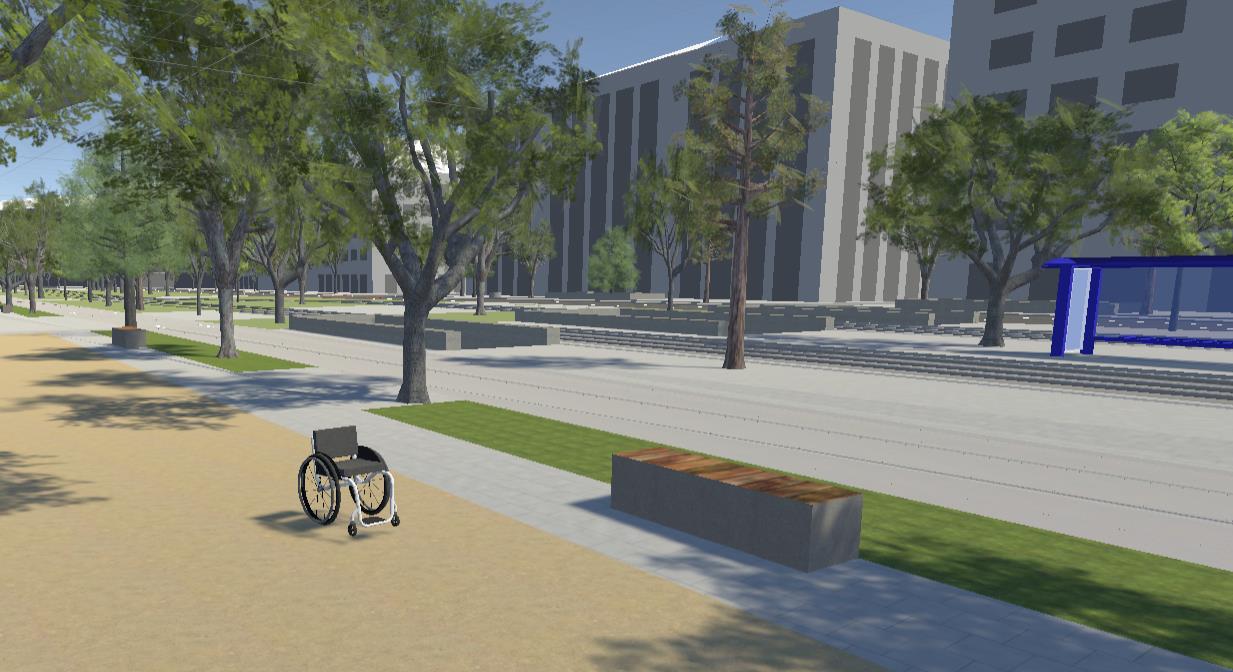Experience the Digital Twin Munich live in a Virtual Reality (VR) simulator.
Researchers at the Technical University of Munich (TUM) have developed VR simulators for electric cargo bikes and wheelchairs and installed them in the Digital Twin Munich to examine driving behavior and interactions with other road users. The cargo trike, sensors, and a virtual reality headset were integrated to create a VR cargo bike simulator. With the help of a game engine, realistic traffic scenarios in Munich’s city center were generated from the inventory data and the results of the traffic modeling of the Digital Twin Munich. The immersive experience of the VR cargo bike simulator allows for empirical studies on weight, load configurations, and vehicle movements within the context of traffic flow. A feasibility study comprising 18 participants indicated the necessity for calibration with real data and potential for enhancement in the simulator control and VR application. The VR wheelchair simulator consists of a wheelchair, a wireless VR headset, and VR trackers that capture the movement of the tires. This design allows for a more effective investigation of the interaction between wheelchair users and other traffic participants than with permanently installed simulator concepts.





















